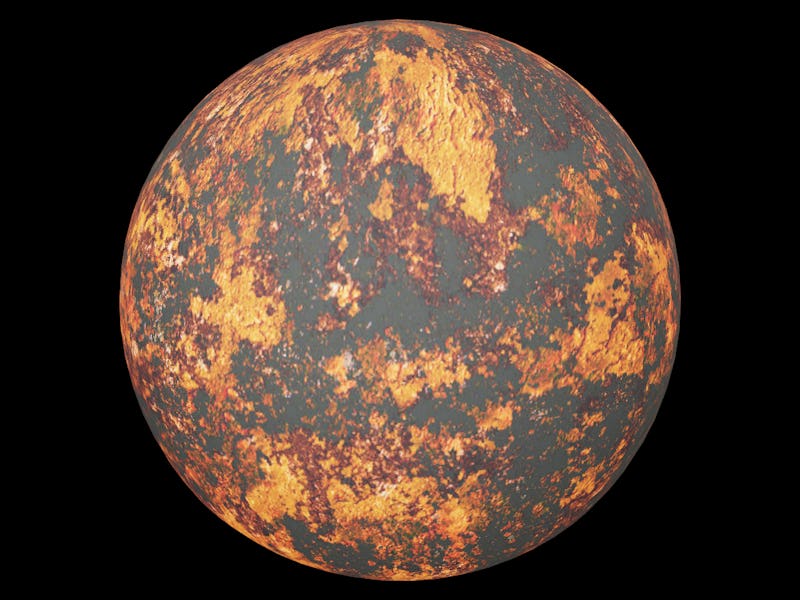Landmark tool could help us find water on other planets
A model of super-Earths identifies which ones could potentially have water on their surface.

Our chances of finding life in the universe may have just increased dramatically.
A new study on super-Earths sheds light on these poorly understood worlds. Super-Earths could have liquid water oceans on their surface, one of the main ingredients for life. These strange worlds are more massive than the Earth but smaller than the solar system’s ice giant Neptune and abundant throughout the universe.
Figuring out which ones are more like Earth (super-Earths) than Neptune (sub-Neptunes) is key to finding life beyond our Solar System. In a potential breakthrough, a team of researchers figured out a way to test the habitability of sub-Neptune or super-Earth exoplanets.
The study, accepted for publication in Astrophysical Journal Letters, is available on the preprint website arXiv.
Here’s the background — NASA’s Kepler Space Telescope hunted for exoplanets between 2009 to 2018. It found around 2,600 exoplanets, and more than one-third of them were super-Earths or sub-Neptunes.
But while they’re easily detectable, we don’t know much about these planets. Not all of them are rocky — some are likely more oceanic, and others could have thick hydrogen atmospheres like our gas giant planets. But super-Earths in their star's habitable zone could have liquid water on their surfaces if the conditions were right.
In the past, the mass of the exoplanets was not enough to determine the thickness of its hydrogen or helium — which could be a barrier to liquid water. As a result, scientists were at a loss for whether or not these planets could have water on their surface.
But the new study could solve this problem.
While sub-Neptunes are fairly common throughout the universe, their larger counterparts, icy giants like Neptune, are very rare.
WHAT’S NEW — For the study, the team of researchers at Caltech, MIT, and other institutions argue that there is a correlation between the energy emitted by carbon and nitrogen gases. This, in turn, shows the differences between a thick or a thin hydrogen/helium envelope.
The chemical compounds of both carbon and nitrogen gases are different under a thick atmosphere. They would most likely exist as Co2 and N2 on an exoplanet with a thin atmosphere that supports liquid water.
The researchers created a model of an ocean planet, giving it the same amount of radiation as Earth around a smaller star called a red dwarf. These are the most plentiful stars in the universe, and several sub-Neptunes have been found orbiting them. The researchers then examined the chemical makeup of its virtual atmosphere.
The team found that around 10 to 20 percent of sub-Neptunes could be ocean worlds, with potential for habitability. This could help determine
WHY THIS MATTERS — The new study provides a way to identify whether or not some super-Earths contain liquid water and possibly even life by examining the chemical makeup of their atmospheres.
Our Solar System contains no super-Earths, but they are quite common in other planetary systems, and testing their habitability increases scientists’ chances of finding habitable exoplanets.
WHAT’S NEXT — NASA is preparing to launch the James Webb Space Telescope on October 31, which will peer into the atmospheres of exoplanets across the universe.
Using Webb, scientists will be able to examine super-Earth planets and the chemical composition of their atmosphere. With that, scientists can determine whether these planets can host liquid water on their surface and the potential for alien life.
Abstract: The recent discovery and initial characterization of sub-Neptune-sized exoplanets that receive stellar irradiance of approximately Earth's raised the prospect of finding habitable planets in the coming decade, because some of these temperate planets may support liquid water oceans if they do not have massive H2/He envelopes and are thus not too hot at the bottom of the envelopes. For planets larger than Earth, and especially planets in the 1.7-3.5 R_Earth population, the mass of the H2/He envelope is typically not sufficiently constrained to assess the potential habitability. Here we show that the solubility equilibria vs. thermochemistry of carbon and nitrogen gases results in observable discriminators between small H2 atmospheres vs. massive ones, because the condition to form a liquid-water ocean and that to achieve the thermochemical equilibrium are mutually exclusive. The dominant carbon and nitrogen gases are typically CH4 and NH3 due to thermochemical recycling in a massive atmosphere of a temperate planet, and those in a small atmosphere overlying a liquid-water ocean are most likely CO2 and N2, followed by CO and CH4 produced photochemically. NH3 is depleted in the small atmosphere by dissolution into the liquid-water ocean. These gases lead to distinctive features in the planet's transmission spectrum, and a moderate number of repeated transit observations with the James Webb Space Telescope should tell apart a small atmosphere vs. a massive one on planets like K2-18 b. This method thus provides a way to use near-term facilities to constrain the atmospheric mass and habitability of temperate sub-Neptune exoplanets.
This article was originally published on